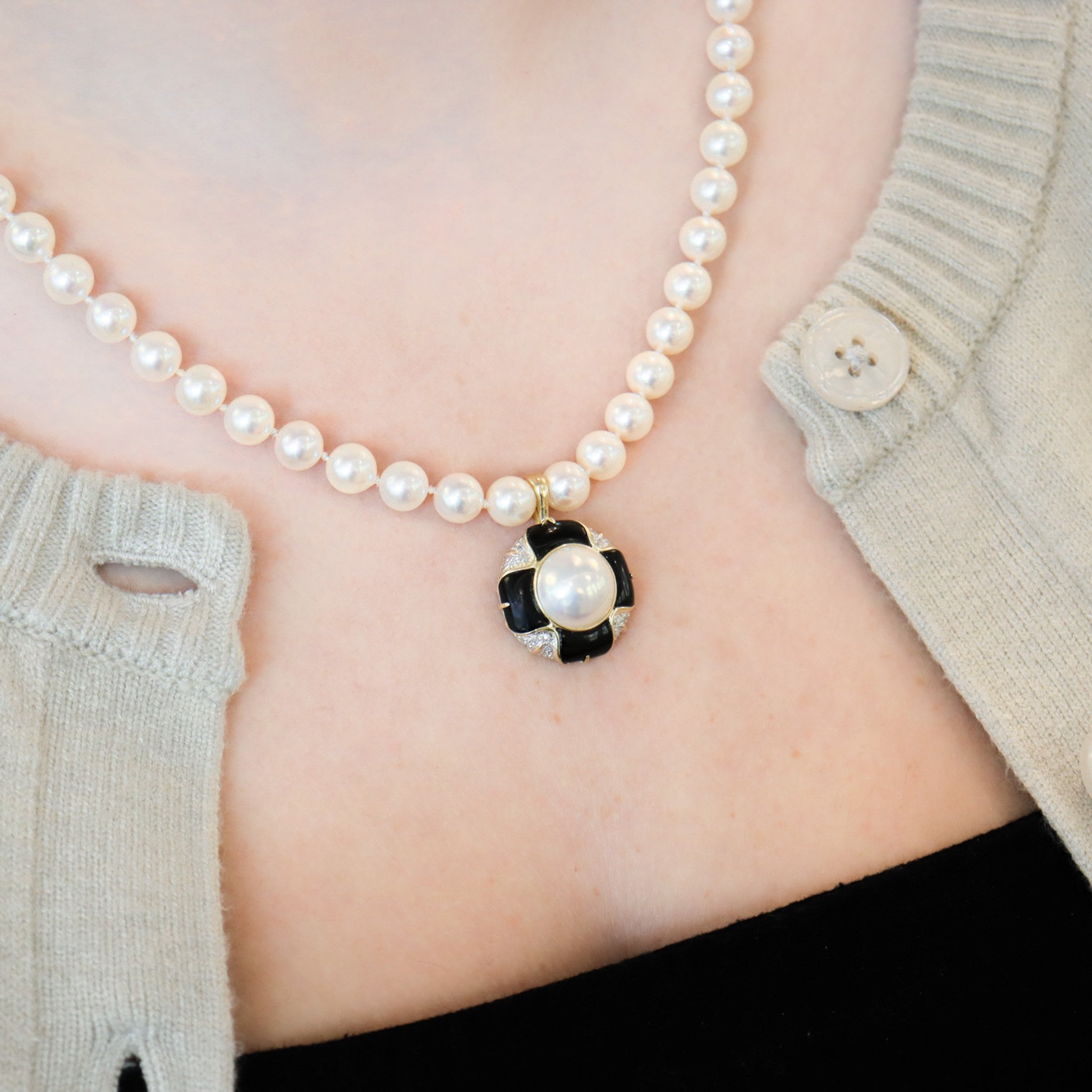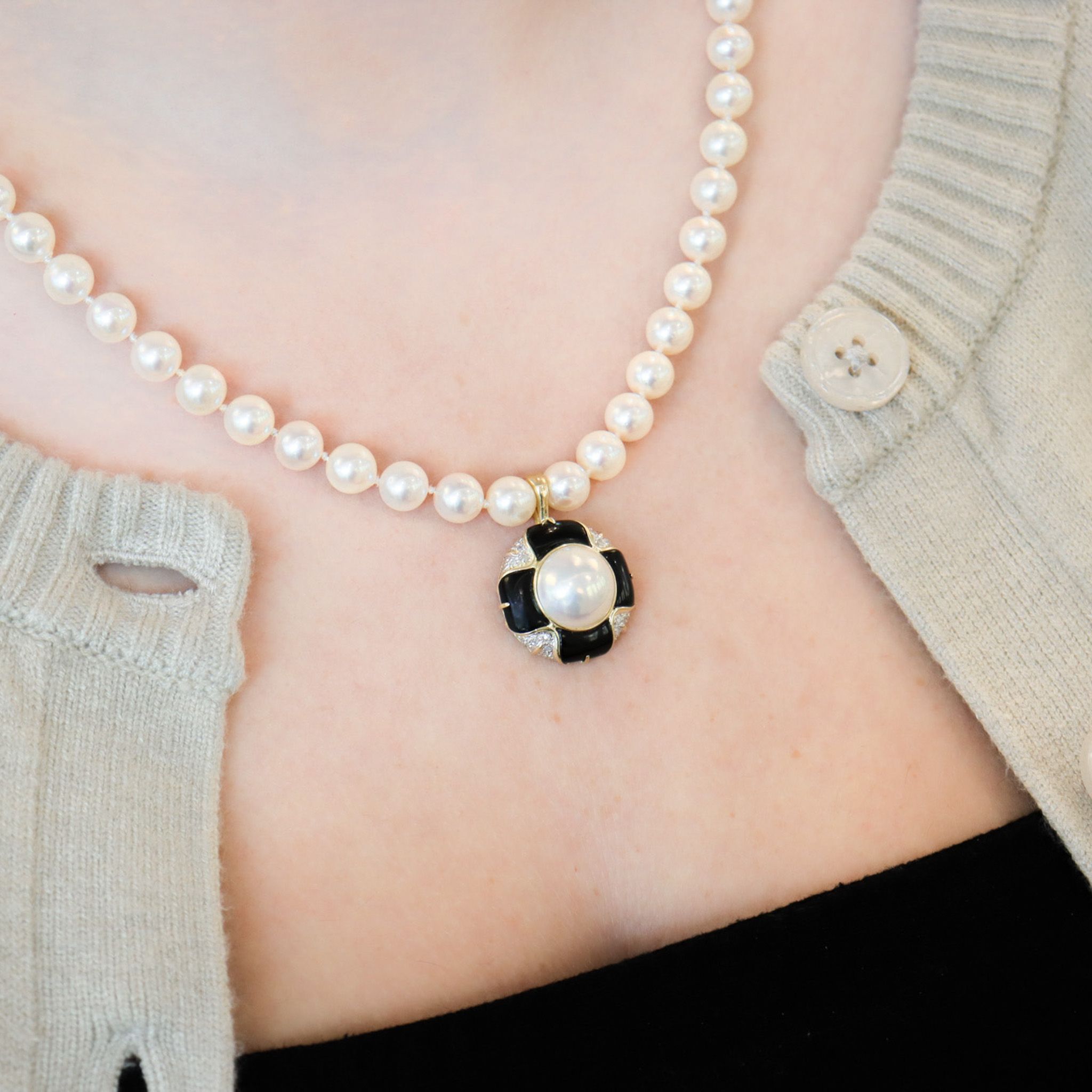14ky Onyx, Pearl & Diamond Pendant
Sourced from our Estate collection
Deco vibes emcompass this onyx, pearl, and diamond pendant with its black & white contrast.
$1,500.00 (CAD)
Details
Material
14k Yellow Gold
Stones
Black Onyx, Mabe Pearl, Diamonds
Size
31mm x 23mm
Weight
5.9g
Condition
Excellent
Contact us to us if you want more details about this piece
Want to try it on? Come visit us at Halifax, NS
Created:2025/01/24 16:19
Pearl - Calcium Carbonate
Developed inside the soft tissue of a living shelled mollusk, pearls are hard and lustrous. First used as jewellery in 420 BC, the sarcophagus of a Persian Princess from that time was found wearing a fragment of pearl jewellery. Although round is considered the preferred shape, pearls come in a multitude of silhouettes. Baroque pearls are irregular, non-spherically shaped and make up most of the cultured freshwater pearls we find today. There are four main cultured pearl varieties. Akoya pearls are saltwater pearls that are white or cream with some hints of pink and green. Tahitian pearls are saltwater pearls that range in colour from eggplant purple, peacock green, metallic grey and greyish blue. They are found in Tahiti and generally range from 7-12mm. South Sea pearls are saltwater pearls that can come in a variety of silver, white or golden and are commonly sourced along the northwest coast of Australia. Ranging from 8-16mm, they have been known to reach up to 20mm. Freshwater pearls are typically cultured in lakes and ponds and come in a wide range of shapes, sizes and colours. Pearl is the birthstone for June and ranks between 2.5-4.5 on the Mohs hardness scale.
Browse other pieces in our collection
More Pearl pieces
Legal & Disclosures
Purchases
Shipping
Terms & Conditions
Privacy Policy
Unsubscribe
Copyright © 2025



